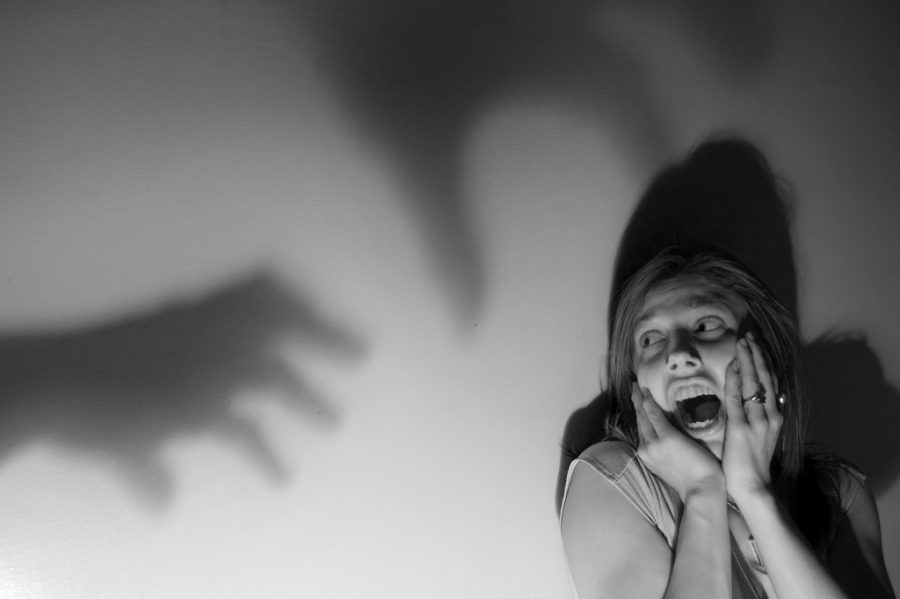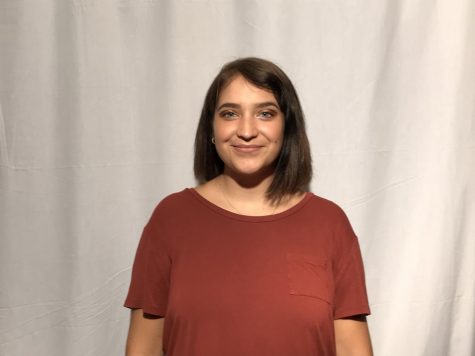Fight or Fright
People willingly do it because it sends chills down their spine, gets their blood pumping, adrenaline rushing, and makes them afraid of the unexpected. One would think that most people would be hard pressed to associate these sensations with anything positive, but the vast number of horror movie and haunted house fanatics crave them. As Halloween night nears, theaters and television stations are crawling with horror films. For those who enjoy watching them, it is practically paradise. During the holiday season so many people get in to the spirit and join in on the frightening experiences whether it’s in person or through the eyes of someone else. But why do people enjoy feeling fear so much?
The archaic form of fear is most closely associated with the “fight or flight” response. According to Psychology Today Magazine, there are two types of fear, biochemical and emotional fear. Biochemical fear is the primitive type that most everybody experiences. These are the physical responses: sweating, increased heart rate, and neurochemicals firing in the adrenal glands screaming at people to avoid the dangerous situation or fight off the cause of danger. Emotional fears are more personal and specific to each individual. This is where fear can be interpreted as either positive or negative.
Those who tend to endure negative effects while watching scary movies will only experience these physiological responses while those who enjoy them will also experience a rise in endorphins and dopamine simultaneously. These are the neurochemicals in the brain that are responsible for feelings of enjoyment.
“Everyone has a different physiological desire. Some people have low thresholds and some people have high thresholds. Low threshold people don’t like the fast heartbeat, sweating, and adrenal gland running. They like it to be nice and calm and steady. People with higher thresholds, who are adrenaline junkies, if you will, like thriller movies because it gets their heart pumping. Other people are living out fantasies that they’re not going to do in life. They are not having to face any danger so they can just enjoy it because they are used to the normalcy of everyday. Because everything is so status quo, they enjoy that it’s something of a surprise. Scary movies are a safe way of enjoying a dangerous lifestyle,” says Heather Willson, AP Psychology teacher at Lake Ridge High School.
For most scary movie lovers, they love watching horror movies for the physiological feelings the adrenaline gives them, but they won’t watch them alone. For senior Iris De La Rosa, both the excitement of fear and community makes the scary movie season that much better.
“I only watch scary movies in theatres where it’s interactive. You are in a group of people that share the same feelings. You’re able to be in an environment where you feel more secure and you’re able to express your feelings with the other audience members. People love scary movies because you are able to connect with others around you and share the feeling of panic and distress. Being able to have an adrenaline rush with others makes scary movies fun to watch,” explained De La Rosa.

Even for those who are not the biggest fans of horror films, the popularity of Halloween season coerces everyone into watching them. Teens who feel as though they are too old to trick-or-treat get together with their friends and watch horror movies or make an appearance at a haunted house. Most of the time, it is a more comfortable and less frightening experience in the company of others, and the accompaniment enhances that feeling of safety. Willson says that the Halloween season procures peer-pressure for people who don’t usually enjoy scary movies but still watch them anyway.
“It’s popular, and people who wouldn’t normally do it because they have a lower threshold for scare and physiological responses, do it during Halloween time because they are more likely to do it because other people are doing it,” says Willson.
Some students at Lake Ridge High School enjoy more of the improbable fantasy that scary movies might bring. A lot of students are caught up in the consistency of everyday life where they wake up, go to school, go to work, sleep, and then repeat. Fear can be thrilling, almost like a roller coaster, where the idea of danger is within reach but the person is in complete safety. Nobody actually wants to experience a life-threatening situation. The difference between people who do enjoy fear and those who don’t, is that the brains of those who do not enjoy fear are not receiving the message that they are in a safe environment. The focus is still survival, when survival is not a real problem. The human brain has the ability to discern between what sight, smell, or taste is a real threat or not.
“People like scary movies so much because most of the movies focus on something fake that could potentially happen in real life such as a possession or killer clown. It’s just something so off the wall that many think would never happen but the movie itself gives you an idea of what might happen in that type of situation,” says senior and Halloween enthusiast Kenna Luzader.
Halloween popularizes hauntings, killings, and anything spooky. With more talk of things that go bump in the night, people are ready to binge watch some scary movies or visit a haunted house. For teenagers whose biggest threat is their own parents’ scolding, a little bit of fear can be a lot of fun.


